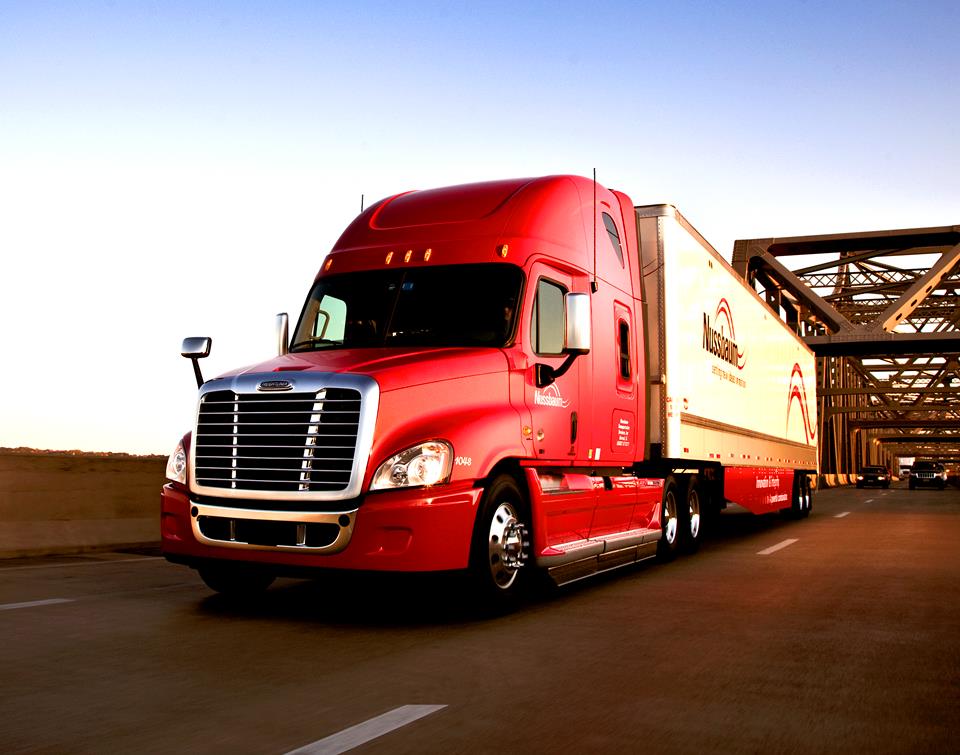As the transportation industry reaches full compliance on greenhouse gas (GHG) phase 1 mandates, GHG Phase 2 is right around the corner. How will the industry approach the next set of requirements to comply with carbon efficiency standards? What do private fleet owners and transportation managers need to know to ensure all milestones are hit? How are industry leaders approaching this new phase of regulations?
We sat down with Scott Perry, VP of Supply Management & Global Product Management at Ryder to talk about GHG Phase 2. Since joining Ryder in 1990, Perry has assumed positions of increasing responsibility in the Fleet Leasing & Maintenance Solutions division. This includes leading the company’s GHG Phase 1 compliance projects. As the industry gets ready for GHG Phase 2, Perry explains the effects of the new regulations to the industry, and outlines how Ryder is approaching the requirements, as well as guiding partners and customers.
Q. How does GHG Phase 2 differ from the first phase of requirements, and how will it affect the transportation industry?
A. Contrary to earlier Environmental Protection Agency (EPA) industry shaping mandates for vehicle emissions in 2007, 2010, 2014, and 2017 where the path was defined by narrow technology implementations such as the introduction of diesel particulate filters (DPF’s) and selective catalytic reduction (SCR), Phase 2 is focused on vehicle efficiency gains in fuel economy, thereby reducing carbon. In order to reduce the carbon, you have to reduce the amount of fuel being consumed. Some high-level improvement targets outlined in the regulation are 24% fuel efficiency improvement for heavy commercial vehicles, 8% efficiency improvement for trailers, and 16% improvement for vocational vehicles. These are all increases above, and beyond the Phase 1 levels.

Q. Like the prior EPA and GHG Phase 1 standards, the industry will have 10 years to reach full compliance. What learnings can be used from Phase 1 for Phase 2?
A. You’re looking at the same timeline of 10 years. Phase 1 implementation has come and gone rapidly from an industry standpoint. Like Phase 1, Phase 2 is not going to be static – 2021 will be much different from 2017, and drastically different from 2024. You have to look at what the building blocks are and what other technologies may come along as the industry as a whole walks down this path together.
Q. What will be one of the biggest challenges for private fleet owners, and the industry, in reaching Phase 2 compliance?
A. Phase 2 has more than 25 different technologies initially identified as potential contributors to efficiency gains. And you can’t reach the targeted efficiency levels with any single technology. The big unknowns here are how these different technologies are going to react when you start combining them. While many of the identified technologies are already available, the costs and performance vary, and the overall increase in vehicle investments remain to be seen. There are also several technologies that have resulted in a negative impact to residual values – one example is 6×2 axles. Understanding what impact those potential configurations will have when combined is paramount. We know there will be greater complexity and potentially increased maintenance expenses when we start bundling these technologies.
Q. How is Ryder approaching the implementation and compliance of GHG Phase 2 to its fleet and its customer’s fleets?
A. We have already committed the time to review and understand the draft regulation so we are ahead of the curve when it goes into effect. We are leveraging our relationships with Original Equipment Manufacturers (OEMs) to work with and understand how some of these technologies fit into our portfolio. We have already deployed a number of these technologies within our fleet to recognize and determine how they react when you start stacking them up with each other. Many of these efficiency driving technologies will come from the second-tier OEMs, which is where Ryder has a lot of relationships as well. This goes beyond one primary relationship, there are multiple supplier relationships that need to be understood. Having the relationships we do, we ensure everyone is talking to each other, asking the right questions. As we are always striving to improve our customer’s fleets, our relationships with the OEMs help support our goals of accelerated deployment of some of these emerging technologies. This will help facilitate the validation of the technology and allow it to gain widespread industry acceptance. The relationships also ensure that integration is looked at through the lens of a fleet operator and not a truck manufacturer.
Q. How can private fleet operators overcome the potential disruption GHG Phase 2 can cause to their business?
A. The complexity of the new technologies and how they interact with each other will create many challenges from uptime to reliability to cost. With our combination of know-how, relationships, and experience, Ryder enables private fleet operators and companies to outsource these challenges to us in order to drive fleet efficiency and compliance. As we enter GHG Phase 2, you have to ask who better to partner with than someone who has a primary relationship with the manufacturers who are developing these technologies. We have experience in deploying these technologies in different types of duty cycles, as well as understand the operating cost and residual value impacts this has. We’ve bundled all this together in our Ryder ChoiceLease product giving operators the best of that industry knowledge, maintenance capabilities, and asset disposition to help them get the best value and recognize the efficiencies that come from compliance these regulations. There are lots of moving parts. As a leader in the transportation industry, we are in the middle of it and understand it. We are here to be the problem solver for companies in that respect.
This article was originally featured on Ryder.com.